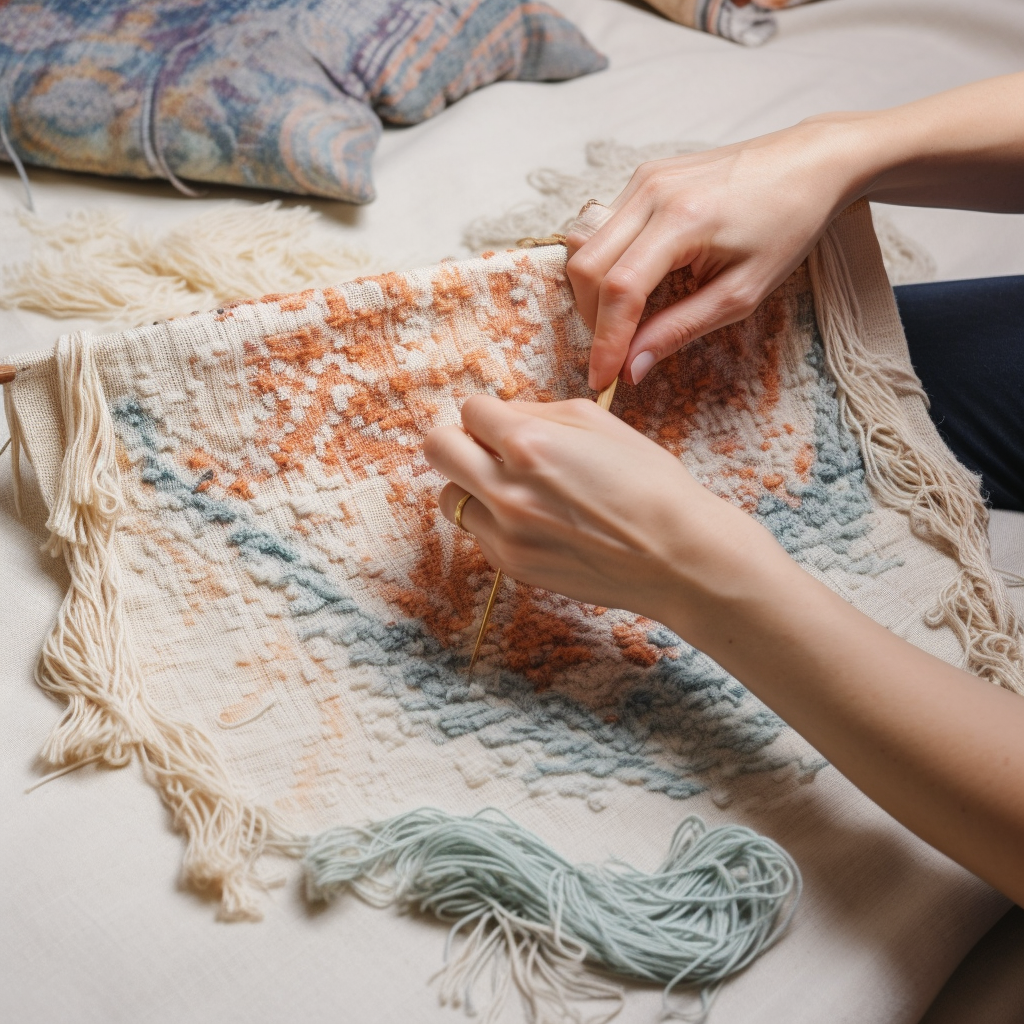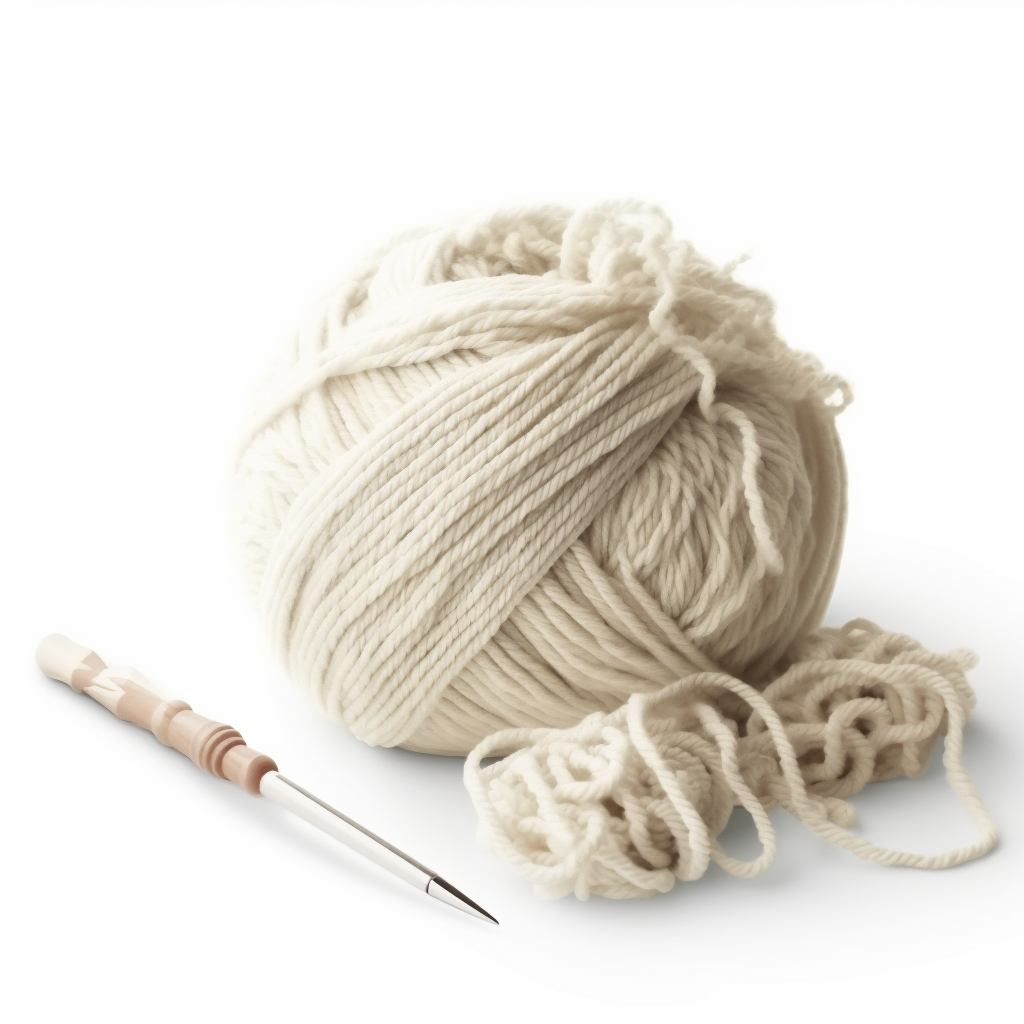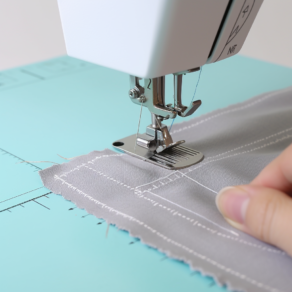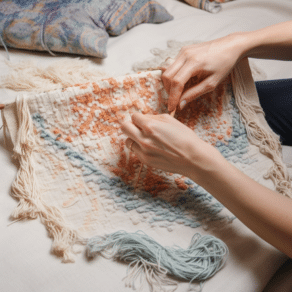Welcome to the colorful, cozy world of handmade rugs! For centuries, people have been creating rugs to add warmth and beauty to their living spaces. In recent years, tufting guns have gained popularity among rug-makers for their speed and efficiency. But what if you don’t have access to a tufting gun or simply prefer a more traditional, hands-on approach? Fear not, fellow crafters, for today’s blog post will take you on a journey through time-honored techniques that don’t require any fancy equipment.
In this post, we’ll explore the fascinating history of rug-making and delve into various methods that have withstood the test of time, such as latch-hooking, weaving, and braiding. We’ll also provide step-by-step instructions for each technique, so you can create your own masterpiece without breaking the bank on expensive tools. So, grab your favorite cup of tea, snuggle up in your coziest blanket, and let’s embark on this exciting rug-making adventure together! Are you ready to unleash your inner artisan and create a one-of-a-kind rug that’s as unique as you are?

Embracing Time-Honored Rug-Making Methods for a Cozier Home
If you’re new to the world of rug-making, you might be wondering: what exactly is a rug without a tufting gun? In essence, it’s a handmade rug created using traditional methods that don’t involve the use of a tufting gun, a modern tool that simplifies and speeds up the rug-making process.
Here’s a breakdown of some popular rug-making techniques that don’t require a tufting gun:
- Latch-hooking: This method uses a small, handheld tool called a latch hook to create a series of knots on a mesh or canvas backing. Each knot is made from a short piece of yarn, and when they’re all combined, they form a plush, textured rug.
- Weaving: Woven rugs are created on a loom, a frame that holds the vertical (warp) and horizontal (weft) threads in place. By interlacing the threads in various patterns, you can create a wide range of designs and textures.
- Braiding: As the name suggests, braided rugs are made from long, continuous braids of fabric or yarn that are coiled and stitched together. This technique is known for its durability and can be used to create oval or circular rugs.
- Prodding or Rag-rugging: This technique involves poking or prodding small strips of fabric through a mesh or hessian backing. The result is a highly textured rug with a shaggy appearance, perfect for adding a touch of whimsy to your space.
So, whether you’re a seasoned crafter or just starting your creative journey, there’s a world of possibilities for making a rug without a tufting gun. Armed with a little know-how and a touch of creativity, you can create a cozy, eye-catching masterpiece that’s truly one-of-a-kind.
The Timeless Allure of Rug-Making Without a Tufting Gun: Why You Should Give It a Try
Choosing to create a rug without a tufting gun might seem unconventional in today’s fast-paced world, but there are plenty of compelling reasons to embrace these traditional techniques. Let’s explore some of the key benefits of rug-making without a tufting gun:
- Connect with history: By using time-honored methods, you’ll forge a bond with generations of artisans who have practiced these crafts for centuries. It’s a unique way to appreciate the rich history and cultural significance of rug-making.
- Unleash your creativity: Traditional rug-making techniques offer a wealth of opportunities for artistic expression. With countless patterns, textures, and designs at your fingertips, you can create a one-of-a-kind masterpiece that reflects your individuality and style.
- Budget-friendly: No need to invest in expensive equipment! Many traditional rug-making methods require minimal tools and materials, making them more accessible for crafters on a budget.
- Therapeutic benefits: The process of creating a rug by hand can be incredibly meditative and calming. As you focus on each knot, weave, or braid, you’ll find yourself entering a mindful state that helps reduce stress and promotes overall well-being.
- Environmentally friendly: Rug-making without a tufting gun often involves upcycling or repurposing materials like old clothing or fabric scraps. By giving new life to these items, you’re helping reduce waste and contribute to a more sustainable future.
So, if you’re looking for a rewarding, creative outlet that connects you with the past, fosters self-expression, and offers numerous benefits, rug-making without a tufting gun might just be the perfect choice for you.
A Tufting Master’s Enthusiastic Adventure into Traditional Rug-Making
Oh my goodness, I have to tell you about my amazing experience diving into the world of rug-making without a tufting gun! As a tufting master, I was initially skeptical, but let me tell you, it turned out to be a fantastic adventure.
The Methods
I tried several techniques like latch-hooking, weaving, braiding, and rag-rugging. Each one offered a unique creative process and a chance to reconnect with age-old traditions. I was genuinely thrilled by the variety and authenticity of these methods!
The Materials
Working with different materials was an absolute treat. I got to play with various types of yarn, fabric, and even upcycled materials, giving a whole new life to my old clothes! It was incredibly fulfilling to see my creativity come to life while being eco-friendly.
The Process
One of the most rewarding aspects was the therapeutic nature of working with my hands. The rhythm of weaving, knotting, and braiding brought a sense of calm and mindfulness to my daily life. It felt like a beautiful, meditative dance with each movement.
The Community
I also discovered a vibrant community of like-minded individuals who share the same passion for traditional rug-making. The conversations, tips, and shared experiences have been invaluable and heartwarming, further enriching my journey.
The Final Product
And the best part? Seeing my handcrafted rug come together bit by bit, with my very own personal touch infused into every stitch, was simply magical. The sense of accomplishment and pride in the finished piece is truly indescribable.
My adventure into rug-making without a tufting gun has been nothing short of extraordinary. I wholeheartedly encourage everyone, whether you’re a seasoned tufting master or a complete beginner, to give these traditional techniques a try. Trust me, you won’t regret it!🌟
Diving into the Details: Unraveling the World of Traditional Rug-Making Techniques
To create a comparison table of the different methods to make a rug without a tufting gun, let’s first elaborate on each method’s main characteristics:
- Latch-hooking: Involves using a small handheld tool called a latch hook to pull short pieces of yarn through a mesh or canvas backing to create a series of knots, resulting in a plush, textured rug.
- Weaving: Utilizes a loom (a frame that holds vertical and horizontal threads) to interlace warp and weft threads in various patterns, creating a range of designs and textures in a woven rug.
- Braiding: Requires long, continuous braids made from fabric or yarn, which are coiled and stitched together to create a sturdy and durable rug, often in oval or circular shapes.
- Prodding or Rag-rugging: Involves poking or prodding small strips of fabric through a mesh or hessian backing, creating a highly textured rug with a shaggy appearance.
Here’s a comparison table of the different rug-making techniques:
|
Technique |
Texture |
Tools & Equipment |
Difficulty Level |
Material Options |
Time Commitment |
Durability |
|
Latch-hooking |
Plush & Textured |
Latch hook, mesh/canvas |
Moderate |
Yarn |
Moderate |
Moderate |
|
Weaving |
Varies |
Loom, threads |
High |
Yarn, fabric, other fibers |
High |
High |
|
Braiding |
Flat & Sturdy |
Needle, thread, scissors |
Low |
Yarn, fabric strips |
High |
High |
|
Prodding/Rag-rugging |
Shaggy & Textured |
Mesh/hessian, fabric strips, prodding tool |
Low |
Fabric strips |
High |
Moderate |
This table highlights the differences in texture, required tools and equipment, difficulty level, material options, time commitment, and durability for each rug-making method without using a tufting gun.
Table of the equipment
Here’s a table of the equipment needed for each rug-making technique without a tufting gun:
|
Technique |
Tools & Equipment |
|
Latch-hooking |
Latch hook, mesh/canvas backing, yarn, scissors, fabric marker |
|
Weaving |
Loom (frame or lap loom), warp & weft threads (yarn, fabric, other fibers), shuttle, scissors, fabric marker, weaving needle |
|
Braiding |
Fabric/yarn strips, scissors, large-eye needle, thread, fabric marker |
|
Prodding/Rag-rugging |
Mesh/hessian backing, fabric strips, prodding tool (or crochet hook), scissors, fabric marker |
Master the Art of Tufting with Yarn and a Tapestry Needle – How to Make a Rug Without a Tufting Gun
Making a rug without a tufting gun can be a fun and rewarding DIY project. Here are the steps to follow:
Materials Needed:
- Rug canvas
- Yarn
- Tapestry needle
- Scissors
- Rug gripper or non-slip mat (optional)

Step 1: Choose Your Design
Decide on the design and size of your rug. You can use a pre-made pattern or create your own. Sketch out your design on paper and make note of the colors you will need.
Step 2: Cut Yarn Strips
Cut your yarn into strips about 6-8 inches long. Use different colors and textures to create a unique look. Don’t worry if the strips are not all exactly the same length – this will add to the rug’s texture.
Step 3: Thread the Tapestry Needle
Thread your tapestry needle with one of the yarn strips. Tie a knot at the end to secure it.
Step 4: Begin Tufting
Starting from the back of the rug canvas, push the needle through a hole in the canvas, then pull it back up through the next hole. Leave a small loop of yarn on the front of the canvas.

Step 5: Repeat and Change Colors
Continue tufting in this way, working row by row and changing colors as needed to match your design. To change colors, simply tie a knot with the old and new colors and continue tufting with the new color.
Step 6: Trim the Yarn
When you have finished tufting the entire design, trim any excess yarn from the front of the rug. Be careful not to cut the loops.

Step 7: Finish the Edges
Fold the edges of the rug under and sew them in place with a needle and thread or a sewing machine. If you want to prevent slipping, attach a rug gripper or non-slip mat to the back of the rug.
Congratulations! You have made a beautiful rug without a tufting gun. Give yourself a pat on the back and enjoy your new creation!
FAQ
It can be a bit time-consuming and requires some patience and attention to detail, but it is not particularly difficult. With practice and perseverance, you can create a beautiful rug that you’ll be proud of.
Yes, you can use any type of yarn that you like. Just make sure that it is thick enough to create a substantial loop and that the colors and textures work well together for your design.
Vacuum your rug regularly to keep it clean and remove any dirt or debris. If it becomes stained or soiled, spot clean it with a mild detergent and warm water, being careful not to scrub too hard or pull on the loops.
The time it takes to make a tufted rug depends on the size and complexity of your design, as well as your level of experience. It can take anywhere from a few hours to several days or even weeks to complete a large rug.
Yes, you can purchase pre-made rug canvases in a variety of sizes and shapes to use for your tufting project. This can save time and effort in preparing your own canvas, but make sure to choose one that is appropriate for your design.







Leave a Comment